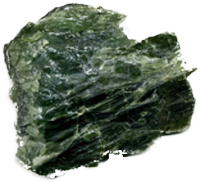![]()
![]()
Throughout the Black Rock area in Nevada one finds every conceivable rock you can think of. Just about all of us have no idea what we are looking at. Our rock collecting is picking up "monkey rocks', those shiny or neat looking peices everywhere. In reality we come across all sorts of interesting things we actually take for granite -granted. This glossary defines many of the rocks we find with accurate descriptions and sometimes photos. Most of these rocks have crystal formations associated with them; which we do not cover. It is not intended to be a Geology Lesson.
A-C • D-F • G-I • J-L • M-O • P-R • S-U • V-X • Y-Z
SCHEELITE - is a calcium tungstate mineral with the chemical formula CaWO4. It is an important ore of tungsten. Well-formed crystals are sought by collectors and are occasionally fashioned into gemstones when suitably free of flaws.. Colors include golden yellow, brownish green to dark brown, pinkish to reddish gray, orange and colorless. Transparency ranges from translucent to transparent and crystal faces are highly lustrous (vitreous to adamantine). Scheelite possesses distinct cleavage and its fracture may be subconchoidal to uneven. Scheelite fluoresces under shortwave ultraviolet light, the mineral glows a bright sky-blue. The presence of molybdenum trace impurities occasionally results in a green glow. Fluorescence of scheelite, sometimes associated with native gold, is used by geologists in the search for gold deposits |
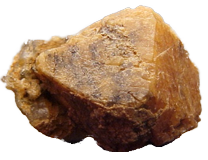 |
|
SELENITE - is a variety of gypsum. which is readily cleaved into natural wands or sheets. It is a very soft stone which can be scratched easily with a fingernail. It is also somewhat flexible and can be bent with gentle pressure, which is why it is sometimes found in curls called ram's horn formations. It is also called Satin Spar at times, though this term is also used for a type of calcite. Colorless, sometimes with pale tints due to inclusions Transparent, Translucent, sometimes appears opaque when it has inclusions such as in desert rose formations. Gypsum is a relatively common mineral, and may be found throughout the world; Selenite denotes the clear crystal variety that is less common. |
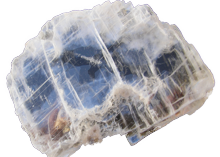 |
|
|
||
SILVER - has a bright, metallic luster, and when untarnished, has a white color. Tarnishes dark gray to black. Silver is found combined with a number of different elements to form a variety of minerals and ores. It is also found in very small amounts (called trace amounts) in gold, lead, zinc, and copper ores. A full two-thirds of the silver resources in the world are found in association with these other metal ores. The remaining third is found in association with deposits of gold. It is primarily found as a constituent of hydrothermal veins. It is often found associated with copper. Unlike gold, it is soluble in any oxidizing mineral acid. |
 |
|
SKARN - is a term to describe a rock formed by metasomatic replacement of a protolith and is most commonly used for calc-silicate rocks formed by the replacement carbonates by contact or regional metamorphism (blah blah blah). It is also a collective term for all such odd rocks occurring alongside ore veins. Skarn can be junk rock or other interesting minerals not desired in acquiring one specific. Overall it can sometimes be a very rewarding piece of the right stuff. |
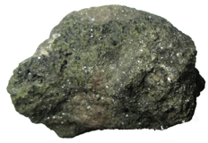 |
|
SULPHUR - is a chemical element with symbol S and atomic number 16. It is an abundant, multivalent non-metal. Under normal conditions, sulfur atoms form cyclic octatomic molecules. Elemental sulfur is a bright yellow crystalline solid at room temperature. Chemically, sulfur reacts with all elements except for nitrogen and the noble gases. Elemental sulfur occurs naturally as the element, but most commonly occurs in combined forms as sulfide and sulfate minerals. Being abundant in native form, sulfur was known in ancient times, being mentioned for its uses in ancient India, ancient Greece, China, and Egypt. Sulfur is referred to in the Bible as brimstone. Today, almost all elemental sulfur is produced as a byproduct of removing sulfur-containing contaminants from natural gas and petroleum. |
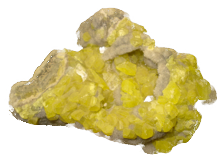 |
|
TUFF - is an igneous rock that forms from the products of an explosive volcanic eruption. In these eruptions the volcano blasts rock, ash, magma and other materials from its vent. This ejecta travels through the air and falls back to Earth in the area surrounding the volcano. If the ejected material is compacted and cemented into a rock that rock will be called "tuff". Tuff is usually thickest near the volcanic vent and decreases in thickness with distance from the volcano. Instead of being a "layer" a tuff is usually a "lens-shaped" deposit. Tuff can also be thickest on the downwind side of the vent or on the side of the vent where the blast was directed. |
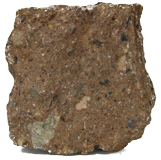 |
|
TUFA - is a variety of limestone, formed by the precipitation of carbonate minerals from ambient temperature water bodies. Geothermally heated hot springs sometimes produce similar (but less porous) carbonate deposits known as travertine. Tufa is sometimes referred to as (meteogene) travertine; care must be taken when searching through literature to prevent confusion with hot spring (thermogene) travertine. Calcareous tufa should not be confused with tuff, a porous volcanic rock with parallel etymological origins that is sometimes called "tufa". Color is usually brown or yellow, sometimes red-brown or a whitish grey. Needle-like crystal formations called Thinolite Crystals can be found internally. |
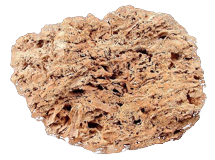 |
|
TUNGSTEN - also known as wolfram, is a chemical element with symbol W and atomic number 74. The word tungsten comes from the Swedish language tung sten, which directly translates to heavy stone. It is a hard, rare metal under standard conditions when uncombined, tungsten is found naturally on Earth only in chemical compounds. In its raw form, tungsten is a hard steel-grey metal that is often brittle and hard to work. If made very pure, tungsten retains its hardness (which exceeds that of many steels), and becomes malleable enough that it can be worked easily. It is worked by forging, drawing, or extruding. Tungsten objects are also commonly formed by sintering. Of all metals in pure form, tungsten has the highest melting point (3422 °C, 6192 °F), lowest vapor pressure (at temperatures above 1650 °C, 3000 °F) and the highest tensile strength. |
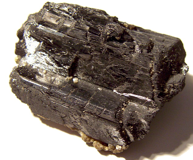 |
|
